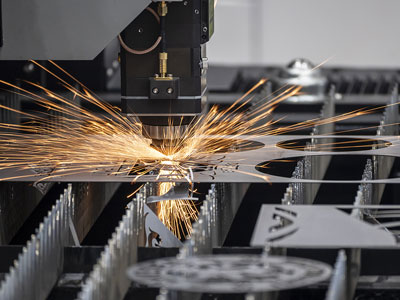Today’s international business climate is becoming more and more competitive and tough to stand out in the crowd. Additionally, more and more plant operations are moving to Mexico, China and other countries where there are lower wage rates, less intensive laws (workers compensation), etc. To succeed in today’s environment, it is no longer desirable to have a world class operation; it is a requirement.
In my experience, typically there are very few quick fixes. Success almost always boils down to a day-to-day approach combining continuous improvement with a touch of radical change from time to time. Since it is a long term strategy, it is rare for a Plant Manager to be perceived as the “hero” like the Sales Manager that receives a large order. Instead, the Plant Manager must keep many balls in the air on a daily basis while continually pushing for steady progress at improvement goals to develop a world class manufacturing plant. It might not be perceived to be the most exciting and glamorous role (in comparison to the “elephant hunter”, the Sales Manager going after the “big” order); however, it is critical. A few of the keys to success are as follows:
First, lead by example. Again, people are #1. Begin with the company’s principles, vision and goals. Tie the plant’s goals to those. And communicate, communicate, communicate. It is critical that people understand why the company’s vision is important (how the product or service helps humanity, customers, etc) and how they fit into that big picture and add value to it. Additionally, the principles (and the culture) are critical – is the company passionate about customer service? Integrity? Etc? Then, it is absolutely vital that the Plant Manager leads by example – does what he/she says he/she will do, sticks to the principles, vision and goals, etc. I’ve found that 80% of success begins with this concept – leading by example and focusing on people.
Second, focus. It sounds quite simple but with the many, many variables and conflicting priorities that arise in the day of the life of a Plant Manager, it is essential to remain focused. I’ve found focus to achieve wonders vs. expensive capital improvements, the latest and greatest manufacturing fad, etc. For example, a team of plant experts succeeded in increasing production efficiencies by 20% on several lines through focus alone. At first, it seemed an impossible feat requiring many equipment upgrades and complex analyses; however, after stepping back and creating a focused team, the results occurred within a three month timeframe through a focus on the basics – people and process.
Third, implement a metric tracking process. It does not need to be complex, requiring new software tools and new resources. Take a step back and think about the key cost drivers for the plant. Is 70% of the cost in materials? Labor? How important is inventory turns? Then, don’t waste time with the small stuff. Dig until a few key metrics emerge that will provide a scorecard of progress on the key cost drivers. It is easy to get overloaded in paperwork and metrics. I’ve seen numerous examples of multiple page reports of metrics requiring three people to produce and distribute that are meaningless and not focused on the “80/20”. I’ve found that a successful approach is to throw out the current reports and instead focus the high level brainpower on the critical few. Don’t worry about perfection. Instead, choose a few and begin (it will evolve over time). Then, discuss the metrics frequently (typically a daily production meeting), make the metrics visible (post on the walls near the work stations, create simple graphics, etc), identify roadblocks to improvement, follow an analytical/ process approach, continually improve, track progress and adjust.
It doesn’t have to be complex or expensive to move towards becoming a world class manufacturing plant, but it will be inordinately expensive not to.



